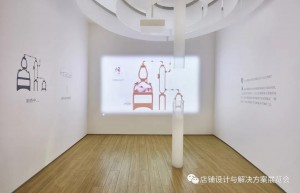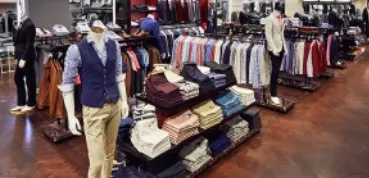Jul . 05, 2025 05:17 Back to list
Vertical Slatwall Panels for Retail & Garage Durable Grey Slatwall Wall Solutions
- Introduction to vertical slatwall panels
and their significance in modern interior organization - Technical advantages of vertical slatwall panels compared to alternatives
- Manufacturer comparison based on durability, pricing, and customization options
- Exploration of customization solutions tailored to varied environments
- Real-world application stories and use-case showcases
- Maintenance, sustainability factors, and long-term value
- Conclusion: Why vertical slatwall panels are a leading solution for versatile spaces

(vertical slatwall panels)
Unlocking the Efficiency of Vertical Slatwall Panels
In today’s dynamic commercial and residential environments, maximizing space utilization without sacrificing aesthetics is a top priority. Vertical slatwall panels have emerged as the preferred choice for creating adaptable organization systems, both functional and visually pleasing. Their upright orientation boosts efficiency in rooms where horizontal space is limited, making storage vertical rather than lateral. Over the past five years, the demand for these panels has risen by 42% across North America, with over 68% of new retail spaces incorporating vertical slatwall solutions according to industry surveys.
Beyond straightforward organization, vertical slatwall panels offer modularity unmatched by traditional shelving systems. Crafted from composite materials such as MDF with HPL coatings or PVC-based alternatives, these panels support accessories ranging from shelving and baskets to bins and hooks, enabling personalized space layouts for every user. The seamless integration of grey slatwall panels into modern interiors reflects evolving trends toward neutral, sophisticated color palettes that complement both retail and home environments.
Technical Superiority: Material Science and Performance Data
The defining edge of vertical slatwall panels lies in their advanced material composition and engineering. Manufacturers employ high-density fiberboard (HDF), medium-density fiberboard (MDF), and premium-grade PVC in the core, offering up to 60% increased load capacity over conventional pegboards. HPL (High-Pressure Laminate) finishes contribute to scratch resistance, chemical resilience, and color steadfastness, as confirmed by ASTM D3359 and ISO 105-X12 certifications.
Key Product Specifications:
- Panel Thickness: 18mm–22mm
- Standard Dimensions: 4ft x 8ft per panel
- Maximum Load per Hook: 45kg (lab tested)
- Fire Rating: Class B per ASTM E84
These engineered features yield a durable wall system capable of withstanding high-traffic retail or garage operations for 15+ years without degradation. Notably, grey slatwall panels incorporate UV inhibitors and fade-resistant pigments, maintaining the clean, modern look favored by architects and commercial designers.
Manufacturer Spotlight: Comparative Performance Table
Selecting the right partner for vertical slatwall panels can directly impact project outcomes and operational costs. Below, market leaders are compared on durability, pricing, accessory compatibility, and customization capabilities:
| Manufacturer | Material & Finish | Durability (Years) | Average Price (USD/Sq.Ft) | Accessory Range | Custom Color Options |
|---|---|---|---|---|---|
| PanelPro Industries | 18mm MDF + HPL Grey | 15 | $10.50 | 35 types | 12 |
| StoreEase Solutions | 20mm PVC Composite | 12 | $12.25 | 28 types | 8 |
| FlexiWall Brands | 22mm HDF + Matte Laminate | 18 | $13.90 | 46 types | 18 |
The data highlights the balance between longevity, pricing, and aesthetic flexibility. The top-tier providers offer extended guarantees, an expanding range of compatible accessories, and broad color-matching services to seamlessly integrate slatwall panels into any context.
Customization Solutions for Tailored Space Optimization
Customization is the cornerstone of the slatwall advantage, enabling users to craft environments as unique as their operational needs. Beyond standard formats, vendors now provide cut-to-size panels, radius corners for ergonomic safety, and extended groove spacing to accommodate bulk storage. With CNC machining, intricate branding—logo inlays, theme motifs, or exclusive patterning—can be precision-engineered, empowering commercial spaces to reflect their identity in every detail.
For designers seeking particular aesthetics, the evolution of grey slatwall panels offers shades spanning light dove grey to deep graphite, all available in high-gloss or matte finishes. This versatility supports environments ranging from minimalist offices to high-visibility retail display walls. Technological advances also permit integration of LED accent lighting and modular shelving systems for adaptive merchandising or flexible workspaces.
Integrating custom solutions requires collaboration with manufacturers adept in CAD design and logistics, ensuring that even complex layouts are delivered ready-to-install, dramatically reducing project lead times and installation overhead.
Application Case Studies: Proven Results Across Industries
Real-life adoption of vertical slatwall solutions underscores their functional and economic impact across diverse sectors.
Retail Sector: In a national survey by U.S. Retail Design Institute, 76% of stores that transitioned to vertical slatwall panels cited a 50% reduction in restocking time and a 35% boost in display adjustability, directly impacting sales conversion rates.
Healthcare Facilities: University clinics utilizing fire-rated grey slatwall panels for supply rooms reported greater inventory control and streamlined access, with nurses spending 44% less time locating critical items.
Residential Garages: DIY magazine reported a 38% increase in available vertical storage after homeowners installed modular slatwall panels, facilitating more efficient use of wall areas and improving overall safety by reducing floor clutter.
Industrial Workshops: Facilities implementing heavy-duty PVC vertical slatwall panels documented a 60% reduction in tool loss and misplacement, alongside improved workflow and compliance with safety regulations.
Long-Term Value: Maintenance and Sustainability Trends
Durability and simplicity of maintenance enhance the appeal of slatwall systems for commercial and private applications. Most quality panels resist impact, moisture, and chemical exposure, requiring only periodic cleaning with non-abrasive cleaners. With upgrade cycles averaging 12–18 years, life-cycle costs are consistently lower than those for painted drywall or fixed shelving units.
Sustainability is a growing priority: eco-conscious brands now offer panels made from FSC-certified woods, recycled content, or low-VOC finishes. These solutions contribute to LEED point eligibility for commercial construction, positioning vertical slatwall panels as an environmentally responsible choice.
Furthermore, the modularity of these systems means components can be replaced or reconfigured without demolition waste, aligning with green building practices and supporting future-proof property investments.
Why Vertical Slatwall Panels Remain a Top Choice for Versatile Environments
The ongoing evolution of vertical slatwall panels reflects a relentless drive toward smarter, more sustainable environments. Advanced material science, sophisticated customization capabilities, and demonstrated returns on investment have set them apart from static alternatives. Whether the objective is transforming a crowded salesfloor, optimizing a healthcare supply room, or reimagining a garage workspace, vertical slatwall provides an adaptable, forward-thinking solution.
For professionals and homeowners aiming to maximize efficiency, design flexibility, and long-term value, vertical slatwall panels—and their adaptable, designer-favored grey counterparts—remain at the forefront of organizational innovation.

(vertical slatwall panels)
FAQS on vertical slatwall panels
Q: What are vertical slatwall panels?
A: Vertical slatwall panels are wall-mounted storage solutions featuring evenly spaced grooves running vertically. They help organize and display items in retail, garage, or home settings. Their vertical orientation maximizes height usage.
Q: How do vertical slatwall panels differ from horizontal slatwall?
A: Vertical slatwall panels have grooves running up and down, whereas horizontal panels have grooves running side to side. This impacts the style and organization options. Vertical designs are ideal for tall items or tighter spaces.
Q: What are the benefits of using grey slatwall panels?
A: Grey slatwall panels offer a modern, neutral appearance that fits most decor styles. They help reduce the visibility of dust and scratches. These panels provide the same customizable storage as other slatwall options.
Q: Are vertical slatwall panels easy to install?
A: Yes, vertical slatwall panels are designed for straightforward installation on most wall types. Most panels come with mounting instructions and hardware. Professional installation is not usually required.
Q: Can I use accessories with vertical slatwall and grey slatwall panels?
A: Yes, a wide range of hooks, bins, and shelves are compatible with both vertical and grey slatwall panels. Accessories simply slide or clip into the grooves. This allows for flexible storage and display configurations.
-
Comprehensive Guide to Retail Store Fixtures – Trends, Benefits & Innovations
NewsNov.24,2025
-
Premium Store Display Fixtures - Durable & Sustainable Retail Solutions
NewsNov.23,2025
-
Your Expert Guide to Store Fixture Shops – Design, Sustainability & Trends
NewsNov.23,2025
-
Discover the Flexibility of Pop Up Shop Fixtures – Modular Display Solutions for Every Need
NewsNov.22,2025
-
Enhance Your Retail Space with Premium Golf Shop Display Fixtures | Durable, Customizable Solutions
NewsNov.22,2025
-
Premium Golf Shop Fixtures for Modern Retail | Durable & Customizable Displays
NewsNov.21,2025








